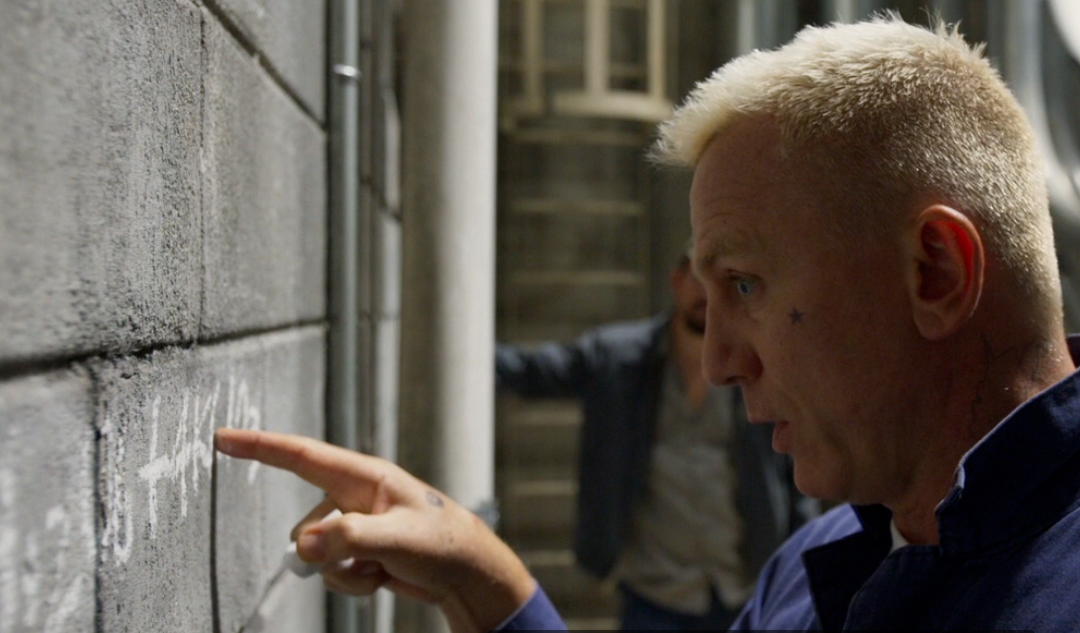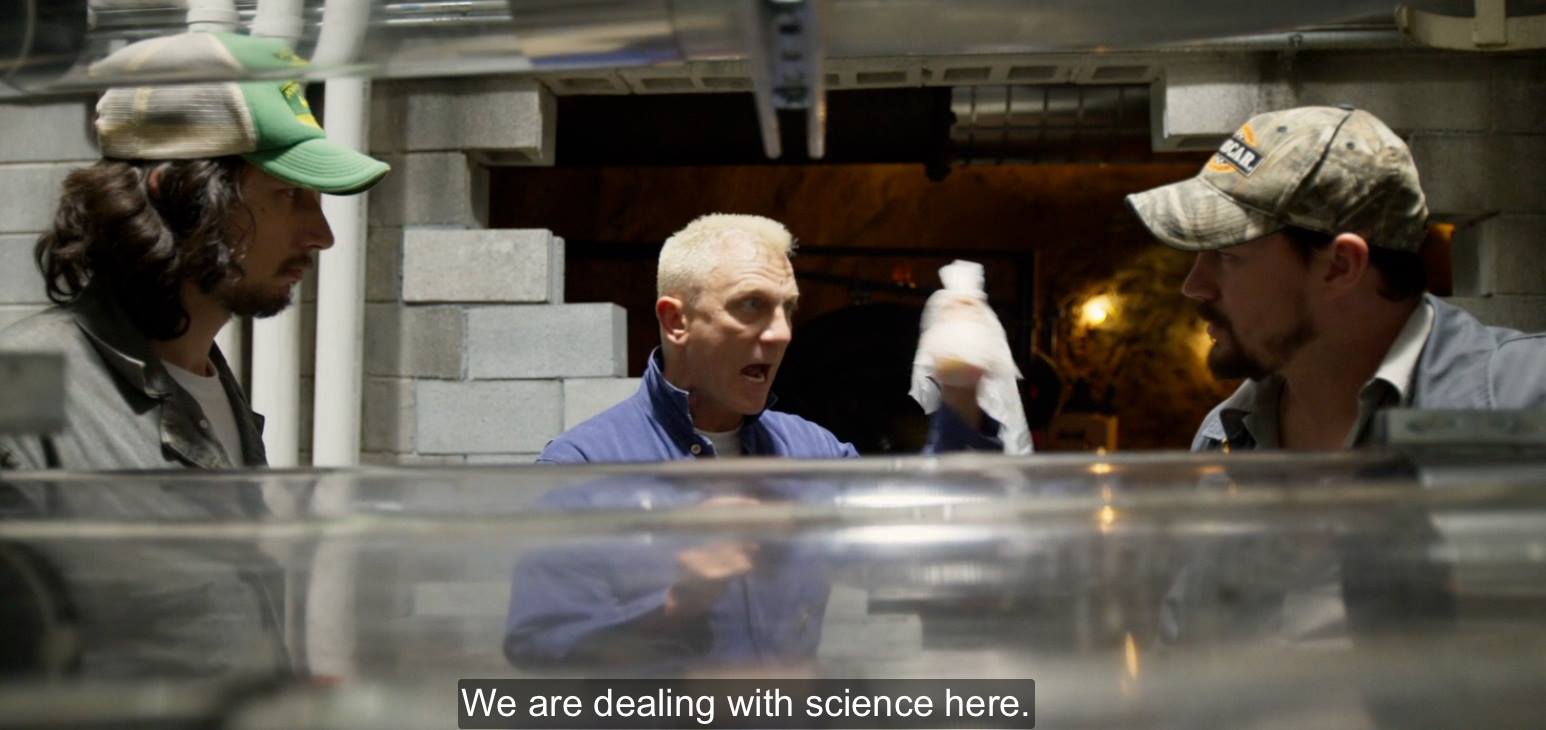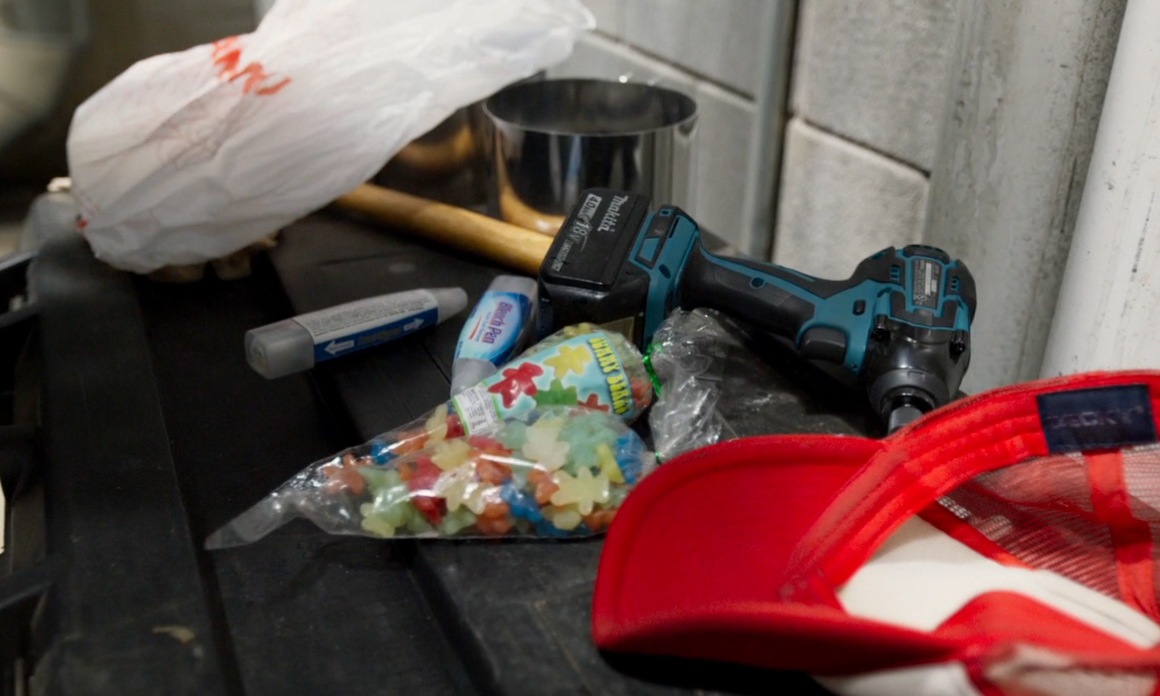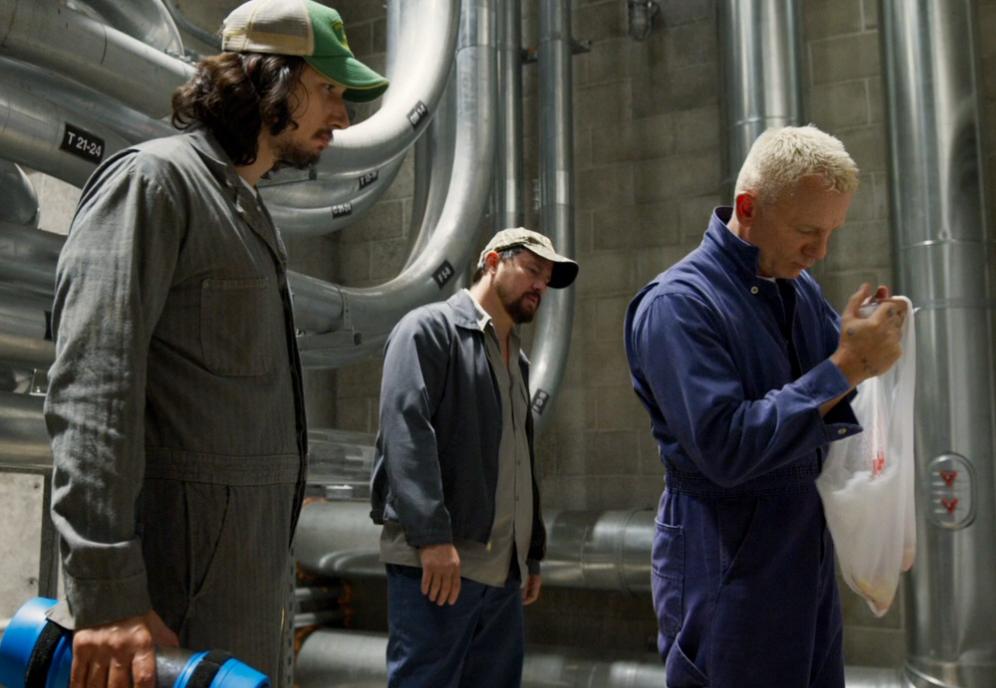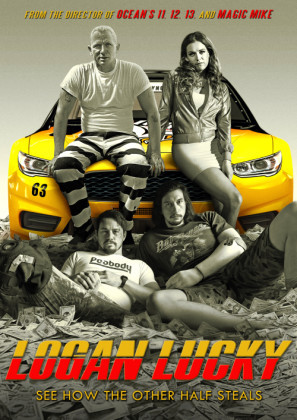 Watch enough science-based science fiction or “real world” movies/TV with science in them, and you’ll come to a simple conclusion: they’re leaving bits out.
Watch enough science-based science fiction or “real world” movies/TV with science in them, and you’ll come to a simple conclusion: they’re leaving bits out.
No matter how many episodes of Breaking Bad you watch, you’re never going to be able to make meth by imitating what Jesse and Walter were doing. The original Mythbusters would often blur out the label of certain ingredients to explosive mixtures or purposely not explain the method to producing such mixtures. According to Adam Savage speaking at Silicon Valley Comic Con, they once even destroyed footage of how a common substance could actually be used as a shockingly powerful explosive substance. And of course, we love MacGyver (both old and new) but when it comes to the dangerous stuff – Mac’s not going to step-by-step you through how to make anything explosive or dangerous in the real world.
It’s a liability thing of course – the last place any network wants their show to be mentioned is in a courtroom as an explanation of how a suspect learned how to do a nasty deed. Likewise, there’s a responsibility factor – producers, writers and science consultants don’t want people to learn how to do bad things on their watch.
Fictional portrayals of harmful science always have at least one of two barriers that prevent audience members from making anything dangerous: 1) the methods and materials needed are far out of the reach of a layperson; and 2) the steps in making the dangerous device or substance are jumbled, incomplete, or just screwed up.
And that gets us to what we’re talking about today: the science of Joe Bang’s “explosive device” in Logan Lucky.
Can I Build a Bomb From Gummy Bears?
No.
Well, actually yes, but not like Joe Bang did it.
In the film, Joe Bang (a bleached-blond and Southern-drawl talking Daniel Craig) helps the Logan Brothers (Adam Drive and Channing Tatum) rob the Charlotte Motor Speedway on the day of its biggest race, The Coca-Cola 600. To do so, Bang’s plan is to send an explosive device into the Speedway’s money room, where all the cash is dropped off via pneumatic tubes. The “explosive device” Bang uses has three parts: bleach pens, salt substitute and gummy bears.
The reaction that Bang explains is something that is recreated in many high school chemistry classrooms and science museums across the country. The usual gist of the demonstration is to show just how much energy is available from the oxidation of sugar.
The basics of the reaction go like this(*): heat potassium chlorate, add gummy bears and stand back.
Potassium chlorate (KClO3) is an oxidizer, that is, in chemical reactions, in gobbles up electrons from other substances. In this case, we’re also looking at it as a source of oxygen.
Gummy bears are almost pure sucrose (C12H22O11), that is, table sugar.
The reaction sequence is pretty simple – generally speaking, the potassium chlorate is heated to melting and undergoes a decomposition reaction. As a result, oxygen is given off according to the following reaction:
KClO3(s) -> 2KCl(s) + 3O2(g)
At this point, the gummy bear is added in and a combustion reaction occurs. The full reaction looks like this:
C12H22O11(s) + 12O2(g) → 12CO2(g) + 11H2O(l) + heat
Oxygen wants all of the electrons it can get, and the sugary gummy bears have loads. The electrons move from the sugar to the oxygen, and energy is liberated. That’s the heat. The reaction is hypergolic, meaning that the fuel (the sugar) ignites on contact with the oxidizer (the molten potassium chlorate).
The reaction is very hot, and the heat continues the decomposition of any potassium chlorate that’s left. It finally sputters out when all the fuel is used up. The purple-violet glow is a distinctive characteristic of potassium, not the color of the bear that is dropped in. Potassium lets off purple light when it is heated up. Ever enjoy purple fireworks? Thanks, potassium.
The large amount of what looks to be smoke that’s given off is mostly water vapor with some sugar that isn’t used up, resulting in a lingering sweet smell after the reaction. Potassium chloride is left behind (from the decomposition of the potassium chlorate), along with some carbon from the combustion, and as anyone who’s done this demonstration can tell you, that test tube is pretty much trashed.
That heat and light energy? That comes from breaking the chemical bonds that are holding the sugar molecule together. Energy is given off for each bond broken, and the oxygen is ripping its way through every sugar molecule it can find, because it’s hungry for the electrons of the atoms Thanks to oxygen’s strong electronegativity (how strongly it attracts a shared pair of electrons) those electrons are going to go with oxygen rather than stay with in with the sugar.
Oxygen. Homewrecker.
The heat released is roughly 32.7 kilojoules/bear, which corresponds nicely to the Calories in a gummy bear. There are about 8 Calories (big “C” means kilocalories) in a gummy bear, and 1 kilocalorie = 4.18 kilojoules, so 8 Calories = 33.4 kJ. 1 calorie (lowercase “c”) is the amount of heat energy needed to raise the temperature of water by 1°C. 33,400 calories is a lot of heat released all of a sudden.
It looks like this (minus the dorky music):
https://youtu.be/eTaCN-VzZw4
In a science museum, this demonstration is usually performed as a way of showing just how much energy is in the food we eat. Effectively, the reaction that happens in the test tube with the gummy bear is the same as what happens when you eat a gummy bear, but the rate is much, much, much slower. That’s why you don’t have purplish jets of flame shooting out of your gut after downing a few of the chewy candies.
So – in short – this is a reaction that can be performed pretty easily if you have the right ingredients (**).
Let’s talk about Mr. Bang’s approach though.
Joe Bang or Joe Fizz?
Down in the tunnels, Joe Bang’s list of ingredients are different than what was talked about above, as is his approach: he dumps in the salt substitute and the gummy bears, sprays in the bleach from the two bleach pens, ties the bag shut and, according to him, it’s ready to go.
Confronted by Jimmy Logan (Channing Tatum), Joe Bang explains:
“To make our bang, we need potassium chlorate. Bleach pens is pure sodium hypochlorite. Combined with the potassium chloride in the salt substitute, we have created an equal exchange of ions.”
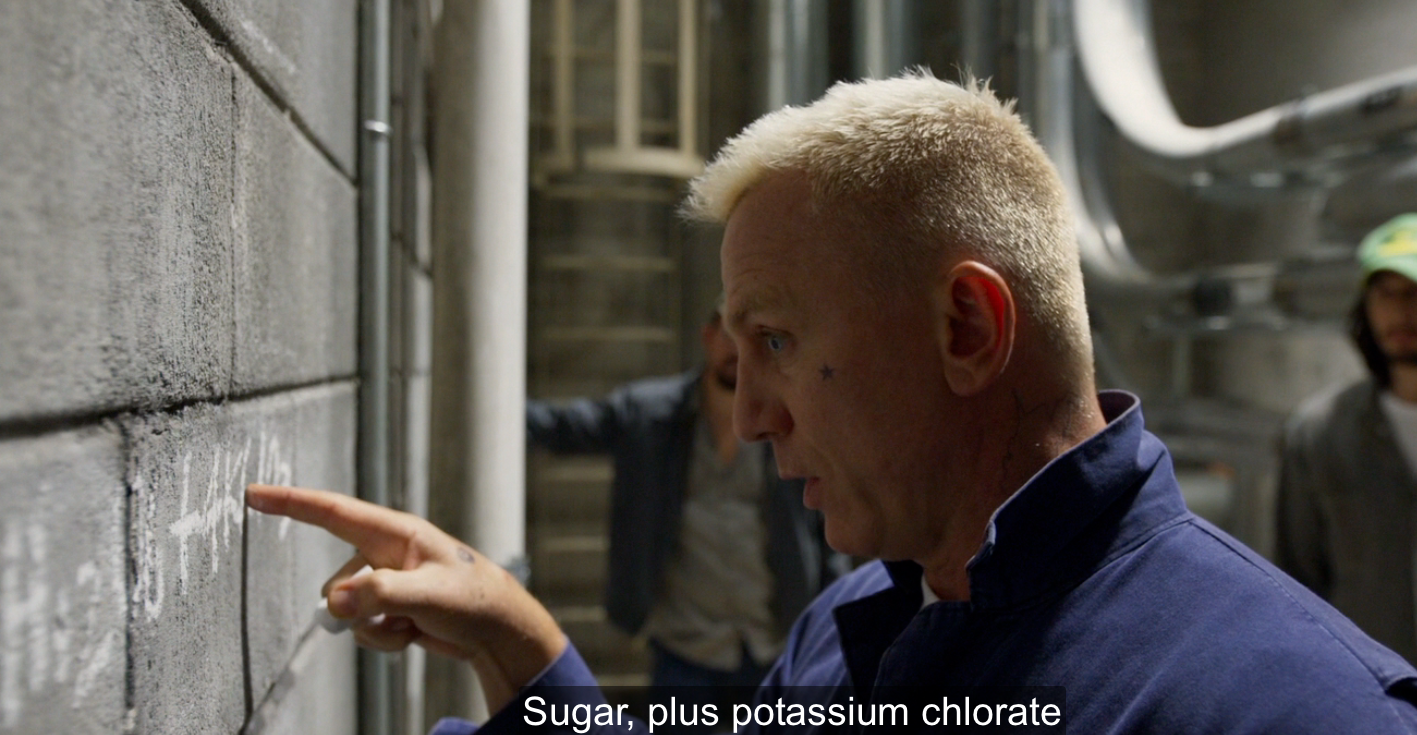
Apparently the Logans don’t get the explanation, as the next scene is a mildly frustrated Bang explaining the reaction to the two after having written it on the wall in chalk:
“Sugar, plus potassium chlorate yields two gases and a solid. Now, you throw in some heat, you get energy. Energy means light, explosion, or, as I like to call it, the Joe Bang.”
Bang’s approach is..okay in theory in that all the ingredients are there. But still – throwing flour, cocoa powder, sugar and eggs into a bag and shaking it doesn’t make brownies.
Getting potassium chlorate from sodium hypochlorite is a tricky business, and usually starts with boiling bleach to reduce the water and concentrate the sodium chlorate. This is accomplished by a decomposition reaction, usually starting with half a liter of bleach or more. The boiling will take some time and release an appreciable amount of chlorine gas which is extremely dangerous and should never, ever be done in the house. As the water boils off, crystals of sodium chloride (NaCl) will start to precipitate out of the hot bleach, leaving a solution saturated with sodium chlorate. With heat, the decomposition reaction of bleach looks like this:
3NaClO -> 2NaCl + NaClO3
The remaining sodium hypochlorite solution is then mixed with equal parts of a saturated potassium chloride solution (potassium chloride is the “salt” found in salt substitute). As the mixture comes together, this is where you get Joe Bangs’ “equal exchange of ions,” like so:
KCl + NaClO3 -> NaCl + KClO3
This is a great example of a double-replacement reaction. The front end of each of the compounds (K and Na) swaps partners and goes home with the other.
So all of this worked to produce potassium chlorate…kind of. The KClO3 in the above reaction will need to be precipitated out and then dried before it can be used as an oxidizer in the reaction with the gummy bears we outlined above – the potassium chlorate is decomposed to release the oxygen, that oxygen mixes with the sugar and boom.
But starting with bleach and potassium chloride, it’s not a quick process, and it can’t be done at room temperature. Not to mention, the volume of his bleach pens was 2 oz (59 ml) and he dumped the entire salt substitute into the bag. Temperature, proportions, steps of the reaction…Joe Bang had everything wrong, and that “explosive device” as he insisted upon calling it, should never have worked.
But it did. And that was what the story needed. That’s what was important.
Given that the ingredients were correct and that Joe Bang explained the chemistry behind the reaction, it’s clear that Logan Lucky had someone checking the science in the script. But at the same time, someone was also making sure that no one could ever claim that Logan Lucky taught them how to make a gummy bear bomb, which is something we’re definitely okay with.
How Could I Use This is my STEM Classroom?
There are a couple easy ways you could use the clip from Logan Lucky to increase engagement. Once students have seen the correct gummy bear reaction as a demonstration (either on video or in person), show the Logan Lucky clip and ask the question: should Joe Bangs’ “explosive device” have worked? The similarity to what they’ve seen will hook them, but the “weird” factors (the bleach, the salt substitute) will provide a clear line of inquiry that will explain the alternate method. Any variety of project to explain Bang’s method’s shortcomings would work at this point.
Also – as mentioned at the start – when science is blended with fiction, what ethical guidelines should be adhered to? Should science trump story, or should story always win? Where’s the cutoff? Should dangerous conditions in television and movies only be fictitious? What happens to the story then?
That’s just two – there are several other directions you could go, thanks to Joe Bang’s gummy bear device.
(*) Yeah, so we said all of that stuff about how movies and shows make a point to not tell the audience how an explosive is made, and here we are…doing it. Well, one thing – as we’re going to explain, this is a very common demonstration. Instructions are all over the internet, and it’s more than likely you’ve seen this in a chemistry classroom or a science demonstration. That said – we’re just stopping with the demonstration part.
(**) Which are still, even in the age of the internet and everything being for sale, a little tricky to get unless you’re working at an educational institution or lab. Phew.


